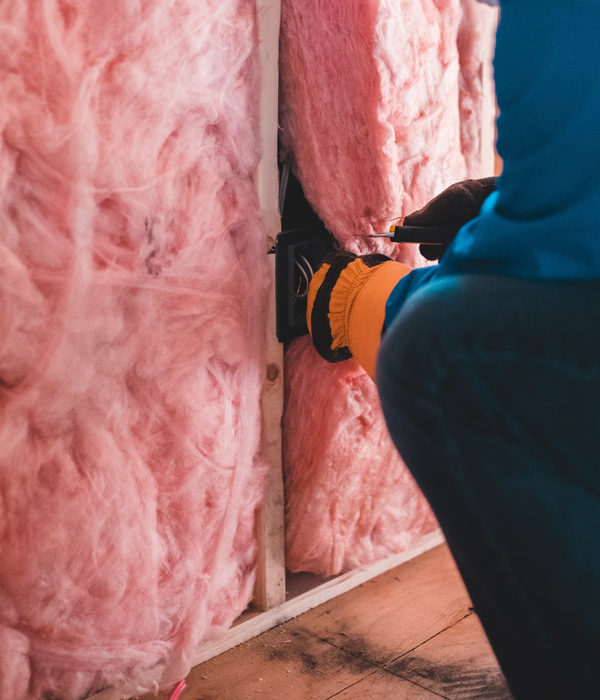Saving money on energy costs is a priority concern for most people, especially if you live in a drafty home. New insulation products are on the market, making your home’s insulation a reality.
We now know that certain insulation types may be affecting our health.
This article focuses on the most common types of insulation products for home use in northeastern Ohio and insulation health considerations. These common types include the spray polyurethane foams (SPF), synthetic polymer foam, fiberglass batts, and blown-in cellulose.
If the wrong type of insulation is used in some home regions, it can affect your health. When insulation products are not applied correctly or mishandled, exposure causes symptoms such as itchy, watery eyes, a burning nose, throat, or eye sensation, or even rashes on the skin.
People even report difficulty breathing, especially if they already have asthma or a breathing disorder. Other symptoms include headache, nausea, and problems with concentration. Some people have found it hard to stay in a home with an unpleasant odor from the wrong insulation type.


Known as off-gassing, small amounts of chemical off-gassing are normal. Usually gone within a few days; however, problems occur when insulation needs to be installed correctly or the wrong type of insulation is used. This is what happens when the smell does not go away.
A reputable insulation contractor will thoroughly clean your home when the installation is complete. The insulation contractor will use a vacuum with a HEPA filter to ensure the removal of all dust particles. The generation of dust during the installation process, such as placing loose fluffy cellulose, trimming dried foam, or fiberglass particles shedding tiny pieces of glass, is a normal part of your insulation installation.
Manufacturers supply Materials Safety Data Sheets (MSDS). These sheets list the chemical components of the insulation. You can download an MSDS sheet from the manufacturer’s website.
Formaldehyde in insulation can cause


Fire retardants are required by code in thermal insulation types. Protecting homes from fire is essential.
Fire retardants are also added to rigid and flexible foam insulation. These ingredients are released into the home. Some of these ingredients have been associated with the disruption of thyroid hormones, are a potential carcinogen, and impede nervous system development in children.
Cellulose insulation types contain ammonium sulfate with the addition of boric acid, these act as fire retardants. The ammonium sulfate can result in off-gassing and produces a foul odor. While more of a concern in hot and humid climates, if the environment is damp, these materials can form products that degrade or corrode metals if in contact.
A class of chemicals called the amines is a part of the ingredients of spray foam insulation. Off-gassing can occur with these compounds producing a sickly-sweet odor or a fishy smell if the foam does not harden properly when installed. This smell can persist for weeks and is known to make people feel sick.
Depending on what area of your home you will be installing insulation guides the type of insulation that should be used.
It is essential that when a damp slurry of cellulose is sprayed into the insulation space, it dries completely. When dry, the slurry forms a hard shell making it impervious to moisture. If it does not dry completely, the insulation can become moldy, which can also be a health hazard.
Off-gassing from cellulose insulation that remains damp can occur. The growth of mold and chemical off-gassing causes symptoms such as respiratory problems (from mold) or throat, nose, and eye irritation (from chemicals).

This is the most critical part of the equation. It is crucial to hire an installer with a lot of experience with the particular type of insulation. The ideal installer has received training from the manufacturer about their specific products and follows the manufacturer’s instructions when prepping the area, mixing the product, and applying it.
Your home will be energy efficient with our high quality insulation keeping you warm in the winter and cool in the summer.

Heating costs will continue to rise with fuel costs.

You can save money every month with our high quality insulation.
"We insulated our home with Installed Insulation Services Inc. and our heating costs dropped 40-50% ... Thank you Installed Insulation Services Inc.!."
~Mr. & Mrs. Simpson
Website design by Alpha Key Digital.
© 2025 Installed Services Inc.